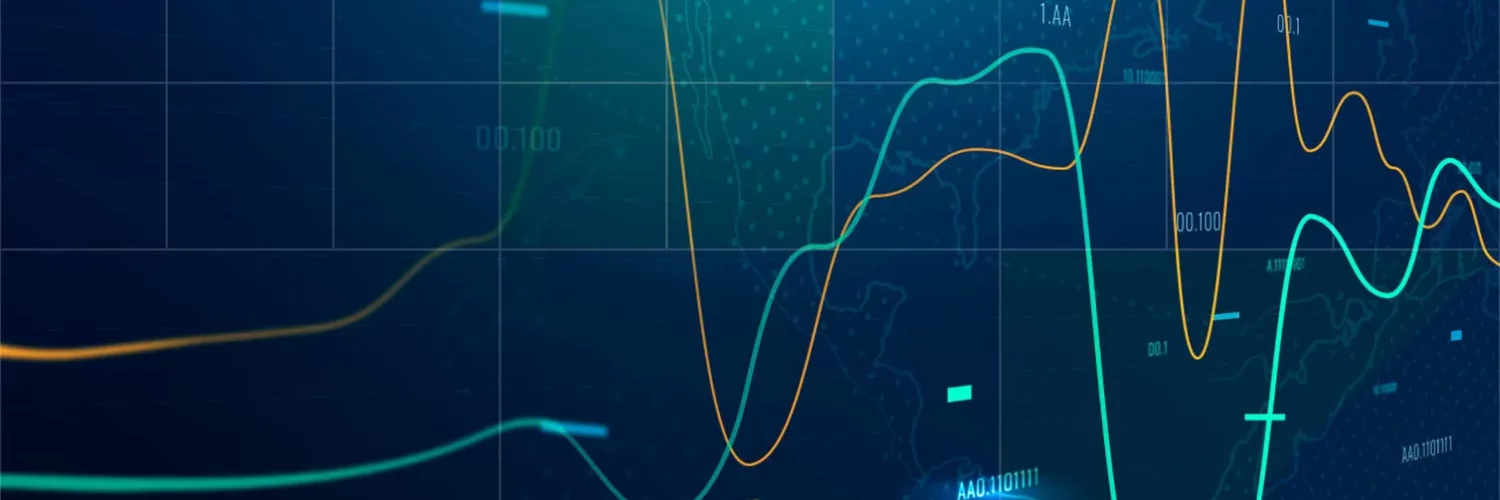Introduction
Time series analysis can be defined as the study of data collected over a specific interval of time to understand the relationship between the variable and time, i.e., the behavior or characteristics of a response variable with respect to time.
This is particularly useful when we want to identify trends in a variable like sales, stock market predictions, or profit margin projections over time. Data scientists utilize this technique to provide detailed reports that help stakeholders in making decisions about their company’s growth.
In this blog, we will first discuss the underlying concept of time series data and its applications, followed by a step-by-step process for time series analysis using Python.
What is Time Series Analysis?
Time series data represents a series of time-based variables that store information, such as year, month, week, day, hour, minutes, and seconds.
Data scientists use this time variable as a reference or starting point for their analysis and
forecasting. This data is stored in a specific ordered sequence, which makes it easier to recognize data with timestamps.
According to the ISO 8601 standard, the general format for time series data is YYYY-MM-DDTHH:mm:ss, which represents the time beginning with the year, followed by the month, date, hour, minutes, and seconds of the day.
For instance: 2024-01-01T18:00:00 represents 6:00 pm on January 1, 2024.
Graph of Time Series Data
Numerical data is vague to understand unless it is represented in a way that enables us to extract key insights from it. A time series graph is simply a representation of data points collected at regular intervals over time.
- X-axis: or time axis, represents the specific times at which the data points are collected.
- Y-axis: or value axis, depicts the data points themselves.
The line graph below is a visual representation of a dataset containing information about total sales made in a month.
Types of Time Series Data
- Metrics
Metric data points are collected at regular periods of time. Examples include daily stock prices, weekly product sales, monthly app downloads, etc.
- Events
Events are data collected across irregular or uncertain time periods, with no defined intervals. Examples include timestamps of sudden system failures, engagement activity of a social media post, etc.
Time Series Analysis vs Time Series Forecasting
Time series analysis, or TSA, is the entire process of analyzing data collected over a specified period of time, whereas time series forecasting is a part of a time series analysis process that involves working with historical data to predict or forecast future values of a variable.
Components of Time Series Analysis
The results obtained from time series analysis are heavily considered when making data-driven decisions in a company. A single anomaly can have a significant impact on our analysis, which is why having a good understanding of the components of time series analysis (TSA) is necessary.
There are primarily four main components of TSA:
1. Trend
A trend is any data collected over a long period of continuous time without any specific pattern of time intervals. For example, consider the sales of a product over the past few years.
2. Seasonality
Seasonality refers to consistent patterns of recurring data values at regular intervals of time, such as daily, weekly, or monthly data. Example: daily calorie consumption count.
3. Irregularity
As the term implies, irregularity or noise refers to unpredictable events or fluctuations that cause a spike in data. This lasts for a short period of time. For example, consider unexpected stock market crashes.
4. Cyclicity
Variations or fluctuations in data that occur in such a way that they repeat in a certain manner and continue for a longer period of time is called cyclicity. Example: climate cycle variations over a year.
Using Time Series Analysis in Data Science
Techniques like time series analysis contribute well in data science for understanding how a variable changes over time. Some of the common strategies include:
1. Identifying trends and patterns
TSA helps us determine whether a variable changes over a given time period. For example, if sales of a product go high during the summer, we can promote it more during that season, produce more variations, and make decisions that support more sales.
2. Forecasting and Prediction
As a data scientist, working with historical data is one of the major aspects of the job. Suppose you’re working with a company that wants to know an estimate of sales they can expect in the following year, month, or quarter. Time series analysis allows you to run historical data through a variety of forecasting models, including moving average, autoregression, and ARIMA, and get detailed insights into the data.
3. Outlier Detection
Outliers, or anomalies, are data points that differ significantly from the rest of the data points in a dataset. These values can affect the analysis as they deviate from the average value of the dataset. The process of removing or dealing with these anomalies is called outlier detection.
Applications of Time Series Analysis
The following are some of the common applications of time series analysis in various industries:
Technology
- To enhance the user experience by analyzing application usage patterns. This helps developers prioritize tasks that are in favor of user feedback.
- Understanding user behaviors, such as the most frequently used app features, can help the product develop and promote similar features to future audiences.
- To analyze landing page traffic on a daily basis. This is especially useful during product launches and allows developers to optimize server capacity in case of an outage.
Finance
- To predict stock market prices and make profitable investments.
- To conduct forecasting on client portfolios and reduce the risk of investment losses.
- To identify uncertain suspicious activity on debit cards and transaction behaviors of customers. This helps to significantly reduce the chances of financial fraud.
Healthcare
- To identify vital symptoms of patients and ensure a timely diagnosis of a disease. Wearable trackers like smartwatches, blood pressure monitors, and fitness bands are helpful in real-time continuous monitoring of patients.
- To predict the outbreak of a viral or infectious disease by analyzing trends and spreading awareness among the public on time.
Marketing
Time series analysis provides sufficient data to strategize and improve marketing campaigns and advertisements by comparing changes in data over a specified time interval.
- Understand market trends and launch campaigns to support the product.
- Forecast potential demands for products to maintain a smooth supply of products.
Time Series Analysis Tasks using Python
You now have a good understanding of the fundamental concepts behind time series analysis. Let us put that knowledge into practice and see how TSA can be integrated with Python:
Dealing with missing values
Inconsistencies and missing values in time series data can deviate the accuracy of analysis results to a large extent. To handle these missing values, Python libraries like Pandas can help us with various techniques. Some of the common methods include:
1. Imputation
Imputation involves filling in the missing values of time series data with an appropriate measure such as:
- Statistical Methods: Missing data is replaced with mean, mode, or median value.
- Forward fill: Missing values are filled with the last observed value in the column.
- Backward fill: Missing values are filled with the next observed value in the column.
For example:
| import pandas as pd df[‘Age’].fillna(df[‘Age’].mean(), inplace=True) |
This will replace the missing values of ‘Age’ column in a dataframe ‘df’ with the mean of the same ‘Age’ column.
2. Interpolation
Interpolation is used to fill missing values in a time series analysis with an estimated value of adjacent data points. Different methods for interpolation includes:
- Linear interpolation: Missing values are estimated by connecting the adjacent data points (before and after values) with a straight line.
- Polynomial interpolation: Missing values are estimated by calculating a polynomial function that fits a set of subsequent data points in time series data.
For example:
| import pandas as pd df[‘weight’] = df[‘weight’].interpolate(‘linear’) |
This will interpolate (or estimate) missing values in the ‘weight’ column using linear interpolation.
Step by step process
1. Data Collection and Preprocessing
- Data is collected from multiple sources, such as local databases, CSVs, and APIs.
- The collected data can be messy and affect the analysis, so data cleaning is performed. This process includes handling missing values, outliers, and creating new features with existing columns.
2. Exploratory Data Analysis (EDA)
- The next step involves exploratory data analysis, or EDA, where basic data analysis like summary statistics and data visualizations is carried out. This helps us to understand the relationship between variables and identify any trends and patterns, if any.
- Statistical tests like stationarity tests are used to check the validity of data. It ensures the statistical properties of data, like mean and variance, are constant over time.
3. Model Selection
- After EDA, you get an idea of key features present in data. In this step, the data is split into training and testing sets.
- An appropriate model for time series is selected based on the features of the dataset. Some common time series models include linear regression for identifying trends, Z-scores and IQR for finding outliers, and ARIMA models for forecasting data.
- The chosen model fits the training dataset.
- Adjust the model parameters for model accuracy.
4. Model Evaluation and Interpretation
- Once the model is trained, we need to test its accuracy using performance metrics. Some common evaluation metrics include MSE (mean squared error), MAE (mean absolute error), and RMSE (root mean squared error) for regression models.
- The testing dataset is used to validate the model performance and make predictions for future values of the given time series data.
Conclusion
Time series analysis is a useful tool for understanding historical data trends and forecasting future data in order to make data-driven decisions. As you learn more, you will discover that there are multiple methods for time series analysis and that there is no single solution.
The appropriate method for time series analysis is determined by the features of the data and the objectives of our analysis.






Add comment